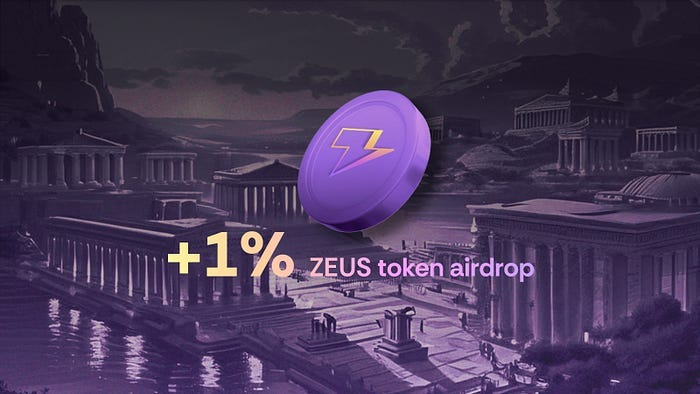
Today, with the rapid development of blockchain technology, the need for cross-chain communication networks has become increasingly urgent. Zeus, a cross-chain bridge focused on facilitating permissionless communication between Solana and the Bitcoin ecosystem, was born. This article will take a deep dive into Zeus’ architecture, token economics, and potential impact in the DeFi space.
Introduction to Zeus
Zeus is an innovative cross-chain communication network designed to bring Bitcoin liquidity to the Solana ecosystem. Through the Apollo suite, users can anchor Bitcoin liquidity to Solana and maximize returns in this ecosystem. Apollo is primarily responsible for bringing BTC to Solana, thereby promoting its adoption across multiple DeFi platforms.
As the Solana ecosystem continues to prosper, Zeus not only provides users with an efficient and low-cost BTC conversion solution, but also tops the voting list in Jupiter's new platform, demonstrating its strong popularity in the market.
Zeus architecture
The architecture of Zeus is mainly composed of four major components: validators, nodes, consensus mechanism and security mechanism. The role of the validator is to ensure the security and reliability of the network, while the nodes are the basis for the operation of the network.
Validators and Nodes: To become a validator on Zeus, individuals need to execute a node. The Zeus node system is composed of multiple complete elements, including point-to-point, broadcast, signature and other off-chain services, as well as dual-function registration services that can be executed on and off the chain. This design not only improves the scalability of the system, but also supports the integration of multiple chains.
consensus mechanism
Zeus's consensus mechanism focuses on the verification process and is separate from on-chain transactions. The verifier uses a threshold signature mechanism, combined with the Schnorr signature of Bitcoin’s main root and Solana’s Ed25519 signature algorithm, to greatly improve the efficiency of transactions. This mechanism not only speeds up the broadcast of transactions, but also increases the security of the system.
Token Economics: Zeus’ token economics are designed to ensure the sustainable development of the ecosystem. The total supply is 1 billion, and the specific distribution is as follows:
Ecosystem and Community Growth (45%): 10% is used for TGE and the remainder is unlocked after 12 months.
Foundation (20%): 10% is used for TGE, the remainder is unlocked after 12 months.
Team (15%): Unlocked after 15 months, released linearly in 15 months.
Early backers (10%): 5% is used for TGE, and the remaining part is unlocked after 3 months and released linearly in 15 months.
Launchpad (5%): 100% for TGE.
Consultant (5%): 5% is used for TGE, and the remainder is unlocked after 6 months, linearly unlocked in 15 months.
In addition, Zeus Network will also airdrop ZEUS tokens to 300,291 independent addresses to further enhance community participation and activity.
Purpose of Zeus Token
In the Zeus network, ZEUS tokens are used for various purposes, including executing Zeus nodes, fee sharing, cross-chain fee staking and other activities. This versatility makes the ZEUS token not only a medium of exchange, but also central to the functioning of the ecosystem.
Roadmap: According to official documents, Zeus’ development roadmap is clear and organized. The main goal is to launch nodes, ZEUS token staking, and BTC staking features by the end of the year. The specific time schedule is as follows:
Season 2: Conducting "Muses Upgrade", mainly developing Zeus nodes to ensure the normal execution of the network.
Season 3: Carry out "Gaia Upgrade" and provide ZEUS and BTC staking services to earn income.
The fourth quarter: "Athena upgrade" is carried out, mainly releasing the programming library for ecological project development, integrating browsers, charging repeater fees, etc.
Summarize
The launch of Zeus not only provides a new solution for introducing Bitcoin liquidity to Solana, but also brings new opportunities to the DeFi field. As the Solana ecosystem continues to expand, the development of Zeus will attract more and more attention. Especially after receiving support from well-known investors in the industry, Zeus has a promising future.
In this blockchain era full of opportunities and challenges, how Zeus will stand out from the competition deserves our continued attention. With the public offering approaching, Zeus will undoubtedly become a rising star in the market.